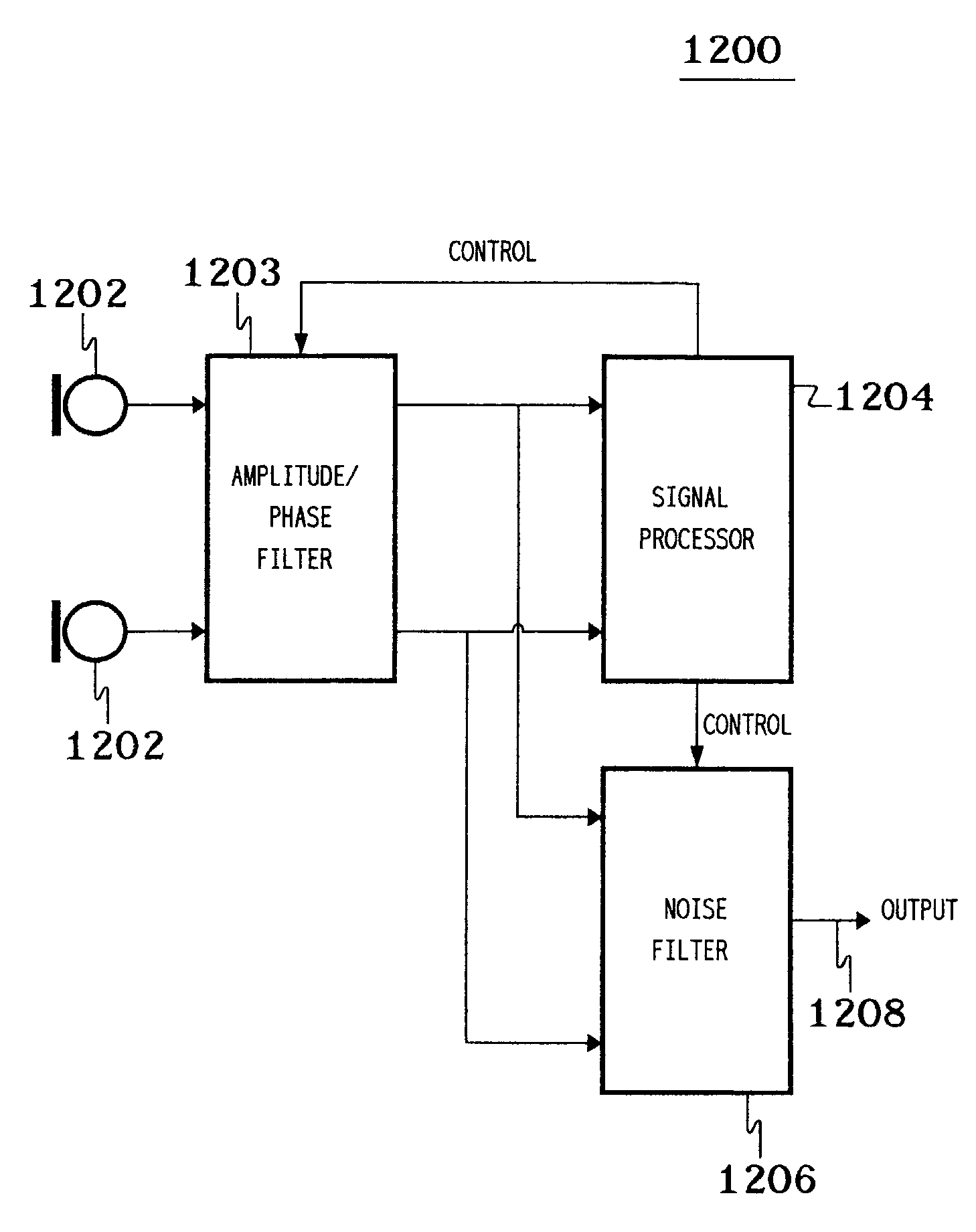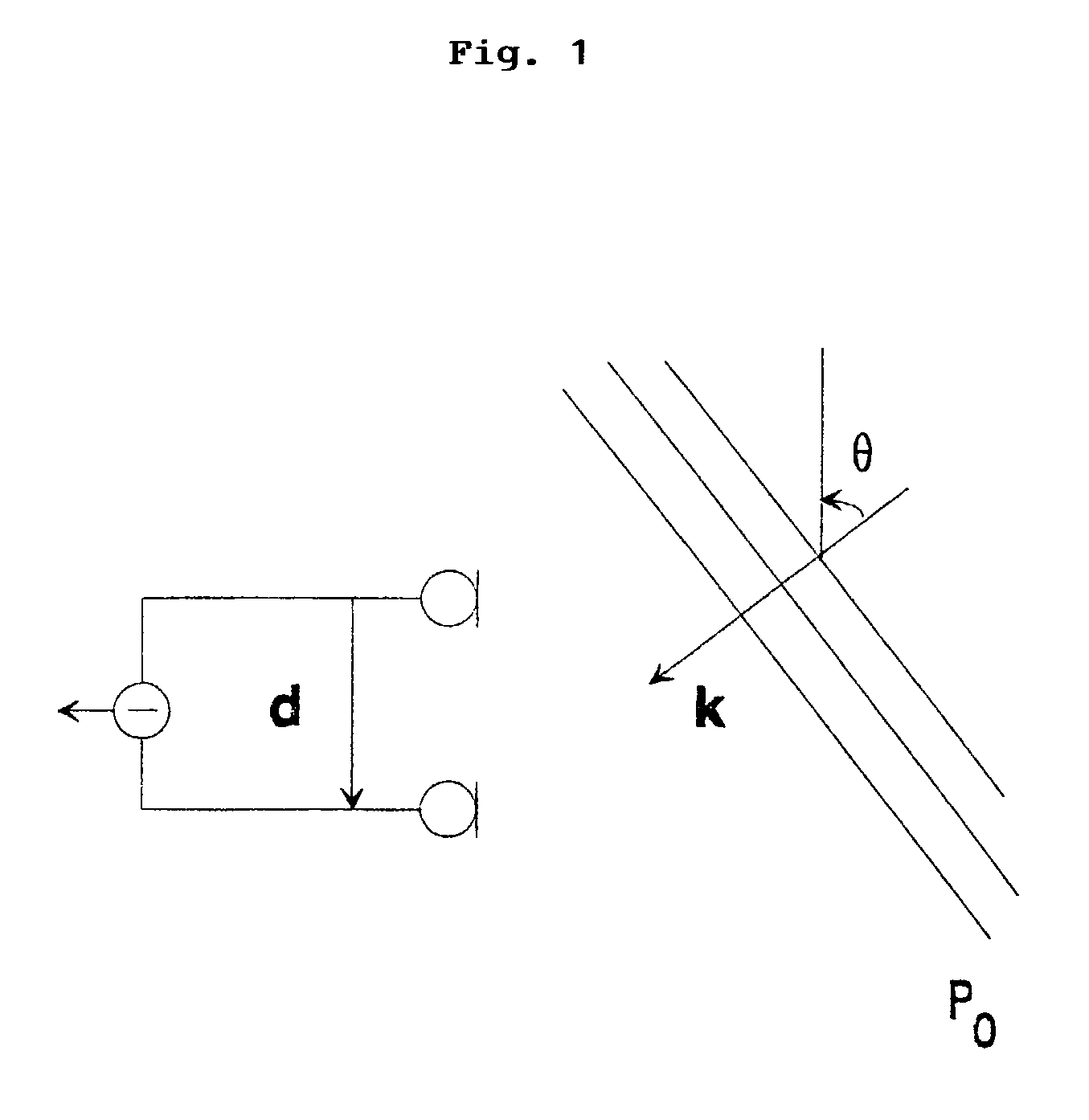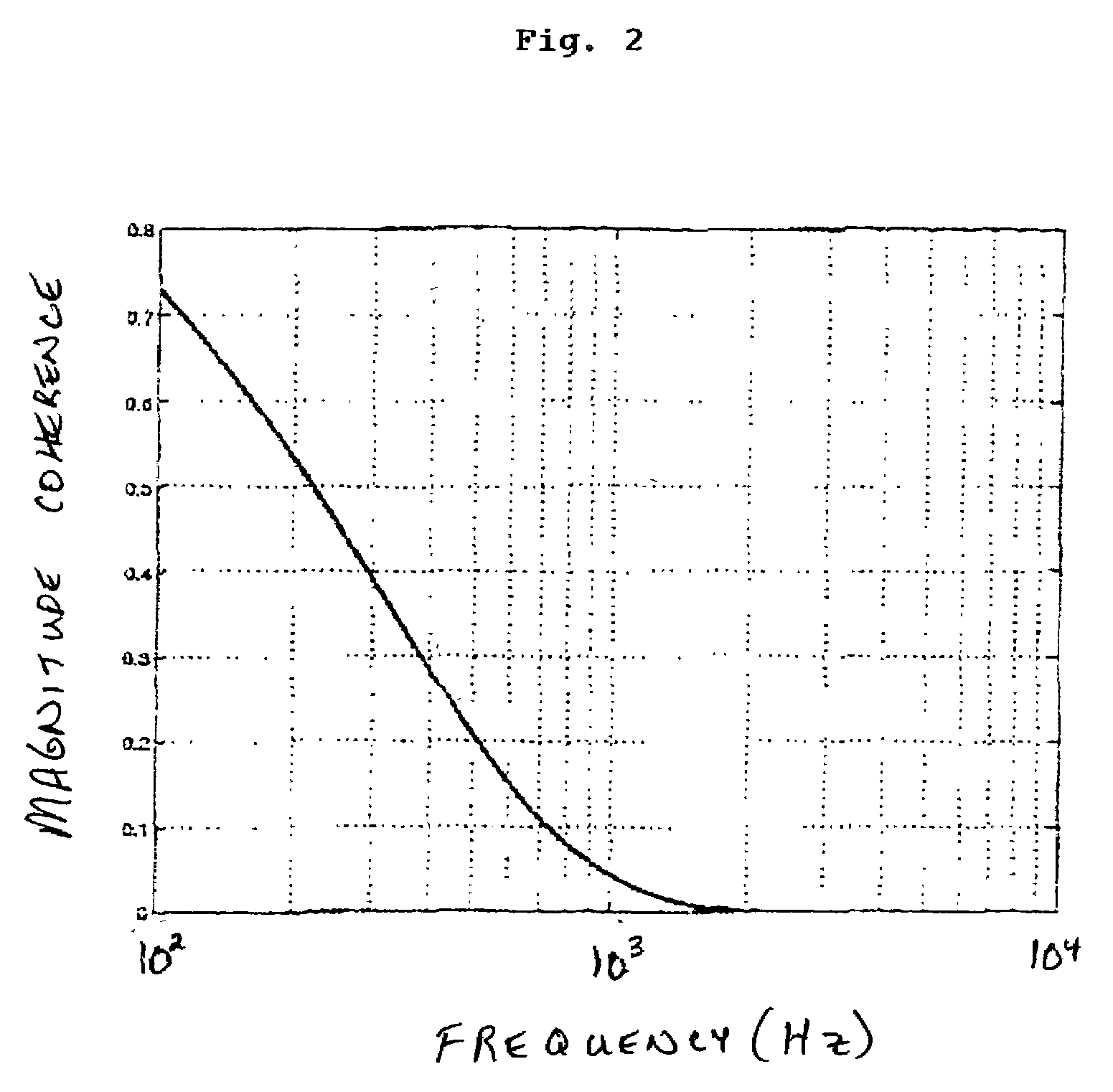Reducing noise in audio systems
a technology for reducing noise and audio systems, applied in the field of acoustics, can solve the problems of large difference between summed and subtracted signal powers, and achieve the effect of reducing propagation speed and rapid loss of signal coheren
- Summary
- Abstract
- Description
- Claims
- Application Information
AI Technical Summary
Benefits of technology
Problems solved by technology
Method used
Image
Examples
Embodiment Construction
Differential Microphone Arrays
[0025]A differential microphone array is a configuration of two or more audio transducers or sensors (e.g., microphones) whose audio output signals are combined to provide one or more array output signals. As used in this specification, the term “first-order” applies to any microphone array whose sensitivity is proportional to the first spatial derivative of the acoustic pressure field. The term “nth-order” is used for microphone arrays that have a response that is proportional to a linear combination of the spatial derivatives up to and including n. Typically, differential microphone arrays combine the outputs of closely spaced transducers in an alternating sign fashion.
[0026]Although realizable differential arrays only approximate the true acoustic pressure differentials, the equations for the general-order spatial differentials provide significant insight into the operation of these systems. To begin, the case for an acoustic planewave propagating wi...
PUM
 Login to View More
Login to View More Abstract
Description
Claims
Application Information
 Login to View More
Login to View More - R&D
- Intellectual Property
- Life Sciences
- Materials
- Tech Scout
- Unparalleled Data Quality
- Higher Quality Content
- 60% Fewer Hallucinations
Browse by: Latest US Patents, China's latest patents, Technical Efficacy Thesaurus, Application Domain, Technology Topic, Popular Technical Reports.
© 2025 PatSnap. All rights reserved.Legal|Privacy policy|Modern Slavery Act Transparency Statement|Sitemap|About US| Contact US: help@patsnap.com



